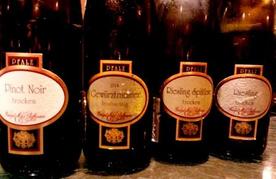 Inheritance laws in Europe can be quite daunting to keep a business family-run however there are a few who still like to keep it private than handing it over to a conglomerate or a financial institution. I am glad I had a chance to meet such wine families in recent past and the most recent was meeting the 18th generation couple of Weingut Heinz Pfaffmann from Pflaz, Germany which was found in 1616. Their wines are now sold in the country; they were in town to showcase their wines and hosted us at a Tasting at Sofitel Mumbai. 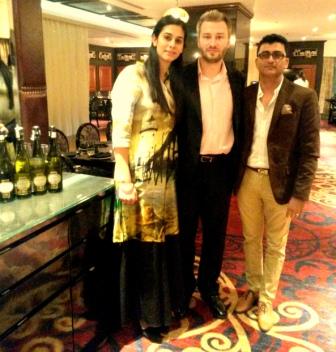 (L to R) Kanupriya, Pawel & Shailender (L to R) Kanupriya, Pawel & Shailender Well the interesting part is that now an Indian is a part of the 18th generation of Pfaffmans, Pawel Hener married Kanupriya Anand from Delhi and this Indian connection seems instrumental in Germany’s biggest privately owned winery to set foot in India. The couple beamed with joy as they presented their wines, the crisp Riesling trocken, an aromatic Riesling spatlese, an opulent Gewurztraminer with medium sweetness and a floral Pinot Noir with old world allure. Certified by Bioland it is the biggest organic certified winery in Europe. Also present at the tasting was Shailender Sandha from Flipsydee the importers, he said; “Being associated with Weingut Heinz Pfaffmann the first certified organic German winery is a welcome pleasure. It’s an honor to import their wines to India as our country is getting familiar with wine-drinking and Indians have started travelling a lot and experiencing new wines.” Weingut Heinz Pfaffmann Riesling Trocken, Riesling Spatlese, Gewurztraminer and Pinot Noir are now available in Mumbai at Rs 2700 a bottle and will be in Delhi soon.
0 Comments
 Mumbai, India French wines were the first love of India when it came to imported wines, due to various reasons and major being the taxes and of course the influx of a lot of two buck chucks that French wines slowly became elusive to an average Indian consumer. The Burgundies and the likes continued their march whilst importers also started looking for more economical and value for money wines from the South of France. Camas from the Languedoc is one such value wine brand which found entry into the country and Jean-Yves Laporte from the house was in Mumbai to showcase his wines,he did so over Indian food at Baluchi the north—west frontier place at the Lalit hotel. 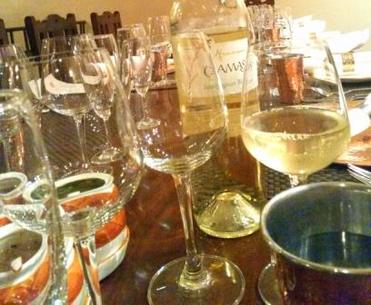 If you were to look down south of France in the Languedoc region , the grapes that would first come to your mind are the likes of Grenache, Mourvedre, Cinsault etc which thrive well in the Mediterranean climate. But within the regions there are microclimates with warm days and cool nights which allow moderate climate grape varieties to flourish. One such region is the upper Aude valley in Limoux where wine co Cave Anne De Joyeuse is located and Camas comes from this winery. This location allows Camas to also do grapes which do well in a moderate climate or even cooler climates and their Pinot Noir is an example of the same. Radelan the importers are carrying the entire Camas portfolio in India which includes Malbec, Chardonnay, Sauvignon Blanc, Syrah, Cab-Sauv and Viognier. The retail price of these is approximately Rs 1450 in Mumbai and this makes them a good option for the Francophiles. We loved the Sauvignon which was reminiscent of delicate guava and passion fruit notes; it was quite easy on the palate devoid of the racy acidity (we love it too) like the Loire pours. The wine complemented the rich paneer and the flavoursome broccoli tandoori well. The mains very paired with Cab-sauv and the Syrah, both wines showed good structure and fruit but for a hint of pear drop aromas in the latter. For the dessert was a rich date and almond halwa and Jean caught us by surprise when he paired it with a medium sweet Gros Manseng emanating floral and stone fruit notes with bracing acidity and a light body. He was trying to gather insights about another winery they own in Gascony and where Gros Manseng an indigenous variety is very popular. 'Great wine for the Indian market if the price is good; however who will move them, the Indian consumers to get to try the Manseng, they are yet to accept the Gewurztraminer.' I commented.
It is always a pleasure to see more wines coming to the market and an honour to be at the previews. And as we always say India needs more, maybe we will see an Armagnac in the market sometime soon if I picked the hints right last evening. P.S: Camas is available in Mumbai and sold and marketed by Shailender Sandha’s Flipsydee. 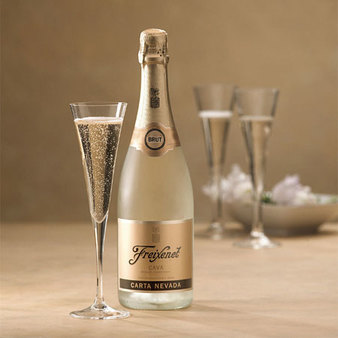 Mumbai, India It’s the fourth Cava I had in the past couple of months in India and this time it was Freixenet the largest exporter of Cava from Spain and the biggest producer, in fact around 80% of all Cava exported is from Freixenet. It is now also imported in India by Aspri Spirits and is prices at Rs 1795 a bottle. Cava is a sparkling wine from Spain and is allowed to come from only certain areas and with particular grape varieties the most classic of them being the Paralleda, Xarel-lo and the Macabeu. They also allow use of red grape varieties for their pink sparkling or Rosados and have also permitted the French Chardonay and Pinot Noir to be used in the blends. Cava is made using the traditional method and often referred to as Spain’s answer to Champagne however with the warmer climate it comes from the fruit profile is quite distinct in most cases. Cava have to be aged for a minimum of 9 months on lees, Cava Reserva for at least 15 months and Gran Reserva for 30. The Gran Reserva can only be Brut or less sweet and have to bear the vintage on the bottle. Aspri has got two variants into the Indian market from the Freixenet portfolio, the Cordon Negro Brut often referred to as the ‘Black Bottle Bubbly’ and touted as the highest imported sparkling wine in the world and the Carta Nevada Semi Dry a sweeter style with 37 grams of residual sugar. The former with lees aging of up to 18 months was still quite on the fruitier side with subtle yeasty notes and the latter was seaming with luscious stone and tropical fruit and vanilla nuances. Damian Clarke- Managing Director, Freixenet Group who flew down for the Mumbai launch said; “Freixenet is enjoyed by consumers in over 150 countries and we are delighted. India will now be one of them. Freixenet represents the style and energy of our hometown, Barcelona. It can be enjoyed on its own or as part of a cocktail but is always a stylish drink consumed by those people who celebrate life.” Indians got exposed to Champagne followed by the now defunct Indian bubbly Marquis De Pompadour and then Prosecco and Jacob’s Creek. Now the rise of new Indian sparkling wines put together with the aforementioned have certainly put sparkling wines popularly called ‘Champagne’ on an Indian wine drinkers consideration set. Cava has stepped in at the right time in the country and will have lesser groundwork to do, all they have to do is reach out to the right audience and Sunday Brunches could be a good way to begin. Salud! Mumbai, India On my last trip to Germany a few months back I gifted a friend few bottles of Rioja Gran Reserva 2004 from Bodegas Faustino and we savored one together. Little did I know that Bacchus had bigger plans for me, the wine is now available in India and I was privee to a tasting of the 2001, 1995 and the 1971 vintages at a wine dinner curated by Kadambari Kapoor of Gusto imports at the Chambers ,Taj Mahal Hotel. 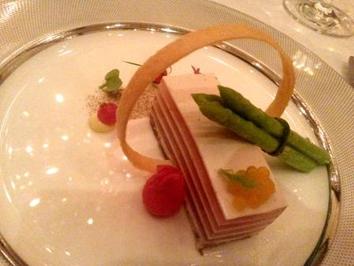 Rocio Marin of Gruppo Faustino was in town to lead the tasting of 7 wines over a 4 course meal. The evening began with a Faustino Cava Brut from the Rioja Alavesa regions, the bubbly made from Viura and Chardonnay with 26 months of lees aging had balanced autolytic and citrus aromas and was rather too crisp for a brut. The first course of Asparagus and Cranberry parfait went beautifully with the Faustino 2014 Crianza Tempranillo rose which was redolent of sweet spice, red fruits, subtle oxidative aromas and with a colour a few shades lighter than a pinot noir. Marin said, ‘Many producers are making paler roses like the popular Provence ones but we like to stick to tradition and macerate the skins for the perfect colour and flavour.’ The third and the fourth wines were the Faustino Crianza 2012 and the Reserva 20009, the former was Fruity and no fuss whist the latter showed bottle aged vegetal notes and earthy elements apart from delicate black fruit. Tempranillo which comes from Temprano meaning early ripening loves a cooler climate and the Rioja Alavesa cooled by the Atlantic provides the perfect condition for these to gather phenolic ripeness which aids aging potential. This perhaps explained the wines lined up to be paired with a forest mushroom and truffle Mille Feuille with aged gruyere followed by the chocolate velvet cake. 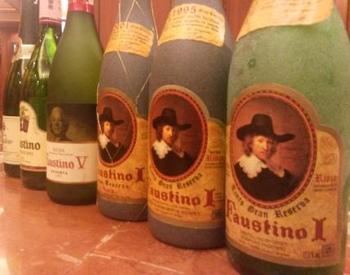 The 2001 Faustino Rioja Gran Reserva a sand blasted bottle one can’t miss is slated to be the best vintage of the 21st century for Faustino just like their 1964 from the 20th. The 2001 was deep ruby and with velvety tannins, there was black fruit with mushroom and forest floor notes and the finish was quite medium, I felt it was racing towards its peak. The 1995 which came up next felt even younger with a deeper ruby shade, very powerful tannins with luscious fruit, spice and cedar aromas this one seemed it could live forever. And the highlight of the evening was the 1971 which showed a pale garnet with a nose full of prunes and honey with subtle notes of spice and black fruit jam, it showed body and moderate acidity with a short to medium finish. The last two paired with the chocolate dessert wonderfully. Spanish wines overall offer great value for money and Faustino with their portfolio in India should entice the Indian consumer. You can check Faustino wines and more from the Gusto portfolio here Mumbai,India In 1984 a group of Kiwis carried Sauvignon Blanc back from their land when they visited the Cape Mentelle winery in Margaret River a lesser know wine region in Australia then. David Hohnen the owner of the winery who was already creating ripples with his Cabernets tasted their wines and the rest is history! David Hohnen in 1985 launched the Cloudy Bay in Marlborough which eventually placed New Zealand Sauvignons on the world wine map and were often touted as an answer to the French from the Loire valley. Cloudy Bay now owned by the LVMH group is available in 30 countries and continues to grow as it celebrates 30th year in business. We celebrated their glorious 30 with Bruno Yvon the Managing Director of Moet Hennessy India who hosted us for a dinner in Vetro at the Oberoi Hotel. Their flagship Sauvignon Blanc 2014 began the proceedings for the evening, it revealed elderflower, subtle green pepper notes with a burst of fruit with moderate acidity, the hall mark of a Marlborough Sauvignon Blanc. Cloudy Bay took its name from a place located in the eastern end the Wairau Valley in Marlborough and it was named so by Captain Cook who also discovered Australia. Wairau Valley where most of the Cloudy Bay vineyards are situated also enjoys the most number of sunshine hours in New Zealand, it helps in the extended ripening season resulting in more flavours. 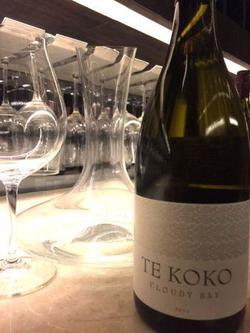 The second wine of the evening was the Te Koko 2011, a barrel fermented Sauvignon Blanc. It was elegant, suave and had depth to it. What impressed us was the symphony of the varietal characteristics and the oak influence. This was beautifully paired with a smoked cauliflower soup. Oak aging of sauvignon blancs was a popular styles in the 80’s and then the unwooded trend came in and still continues. Expressions like Te Koko are done only when they really see the potential in the fruit to take the might of the oak. Fume Blanc, they are popularly called in the US. Chardonnay is the third most popular in the Marlborough region after Sauvignon and Pinot Noir and the Cloudy Bay’s 2012 expression had restrained oak with citrus and stoned fruits to the fore. It paired with gnocchi in an aromatic bell pepper sauce; the caramelized onions added some sweetness to the sauce which played well with the refreshing acidity in the wine. The menu put together by Chef Adriano Baldassare and Rohan Jelkie the Brand Ambassador of Moet Hennessy in India was showing up very well indeed. We ended the evening with a fruity 2013 Pinot Noir with some hint of tobacco and to compliment it were a range of cheeses, the Italian Gorgonzola, Provolone and Taleggio, an English Cheddar and the French Brie. The Kiwi Pinot Noir again akin to the Sauvignon Blanc is the new world’s answer to the big daddies of the old world and the Indian palates are very much ready for this style. Cloudy Bay to mark the 30th has come up with special editions of their Sauvignon Blanc and Pinot Noir to reflect upon the last 29 vintages and to evolve further.
Last thoughts, Marlborough has approximately 109 wineries and they continue to flourish, amidst such stiff competition Cloudy Bay has to keep up their 1985 passion of wine making and we wish them good for their 4th decade in business!!! |
Categories
All
Archives
April 2024
|
|
The Happy High is a Mumbai based beverage consulting co founded in 2014 with a vision to raise the bars of the wine and dine scene in the country. Read more.
|
16, Goldcrest Business Park, LBS Marg, Ghatkopar West, Mumbai 400086.
+91 99307 71739 [email protected] |
